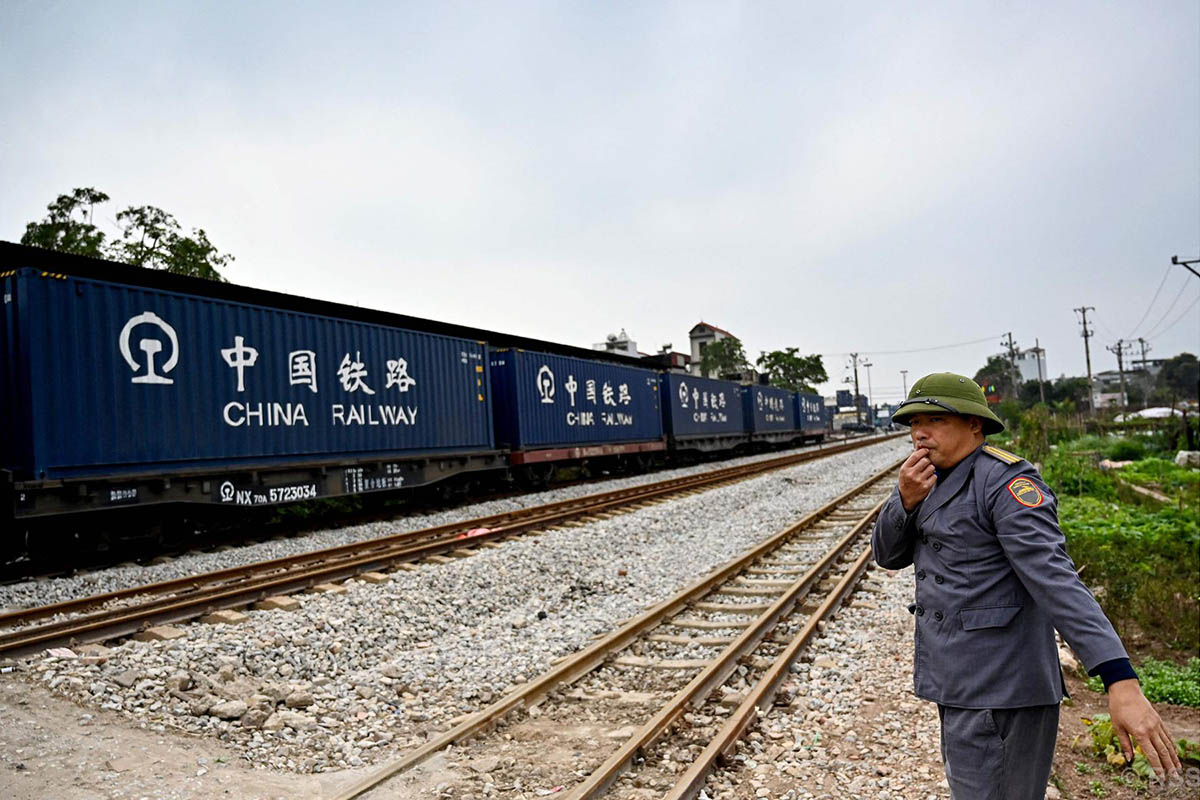
HANOI: Vietnam's parliament on Wednesday approved plans for an $8 billion rail link from its largest northern port city to the border with China, enhancing connections between the two communist-ruled countries and facilitating trade.
The new rail line will traverse key manufacturing hubs in Vietnam, home to global giants like Samsung, Foxconn, and Pegatron, many of whom depend on a steady flow of components from China. The route will stretch 390 kilometres (around 240 miles) from the port city of Haiphong to the mountainous city of Lao Cai, bordering China's Yunnan province, and will also pass through the capital, Hanoi.
The construction of the railway was supported by 95% of parliamentarians in the country's rubber-stamp National Assembly, according to an AFP journalist in the chamber. China will provide some funding through loans for the project, which is expected to exceed $8 billion in cost.
This rail link is part of Vietnam's "Two Corridors, One Belt" initiative, which connects to Beijing's Belt and Road global infrastructure programme. The approval follows a year after both countries pledged to deepen ties during a visit to Vietnam by President Xi Jinping, as Beijing seeks to counter growing US influence with Hanoi.
Vietnam's transport infrastructure is considered relatively weak, with a road network struggling to meet demand and an underdeveloped rail system. The country is becoming an increasingly favoured destination for foreign businesses seeking an alternative to China, but poor infrastructure is seen as a constraint on surging investment.
Dan Martin, international business adviser at Dezan Shira & Associates, said the new rail link could smooth out issues in international supply chains caused by reliance on slow and costly trucks that are "prone to border bottlenecks." "China supplies much of the raw material that fuels Vietnam's manufacturing sector, and keeping that pipeline steady is critical," he told AFP. "A modern rail link cuts through inefficiencies, ensuring goods move smoothly whether they're flowing into Vietnam's factories or heading to global markets via Haiphong's port," he said.
Vietnam announced that a feasibility study for the Haiphong-Lao Cai railway will begin this year, aiming to complete the line by 2030, despite the country's history of overruns with major infrastructure projects. The line, spanning nine provinces and cities, will follow roughly the route of an existing rail track built during the French colonial period. Currently, trains run on that rail at just 50 kilometres an hour (30 mph), but Vietnam says the new line will accommodate both passenger and freight cars with speeds of up to 160 km/h.
Pham Thu Hang, spokesperson for the Ministry of Foreign Affairs, said last week that the rail link would "promote economic, trade, investment and tourism cooperation between the two countries as well as in the region."
This development comes just three months after Vietnam approved plans for a $67 billion high-speed railway from Hanoi to Ho Chi Minh City, another significant infrastructure boost expected to drive growth. The high-speed railway, stretching more than 1,500 kilometres from the capital in the north to the country's business hub in the south, will reduce the current journey time by rail from 30 hours to around five.
The other rail line to China, yet to be approved by parliament, will connect Hanoi to Lang Son province, which borders China's Guangxi region, passing through another area dense with global manufacturing facilities.
During Xi's visit to Hanoi, the two countries signed more than 30 agreements, including a pledge to develop rail links. Vietnam has long pursued a "bamboo diplomacy" approach, aiming to maintain good relations with both China and the United States. While it shares US concerns about Beijing's increasing assertiveness in the contested South China Sea, Vietnam also has close economic ties with China.
By RSS/AFP






